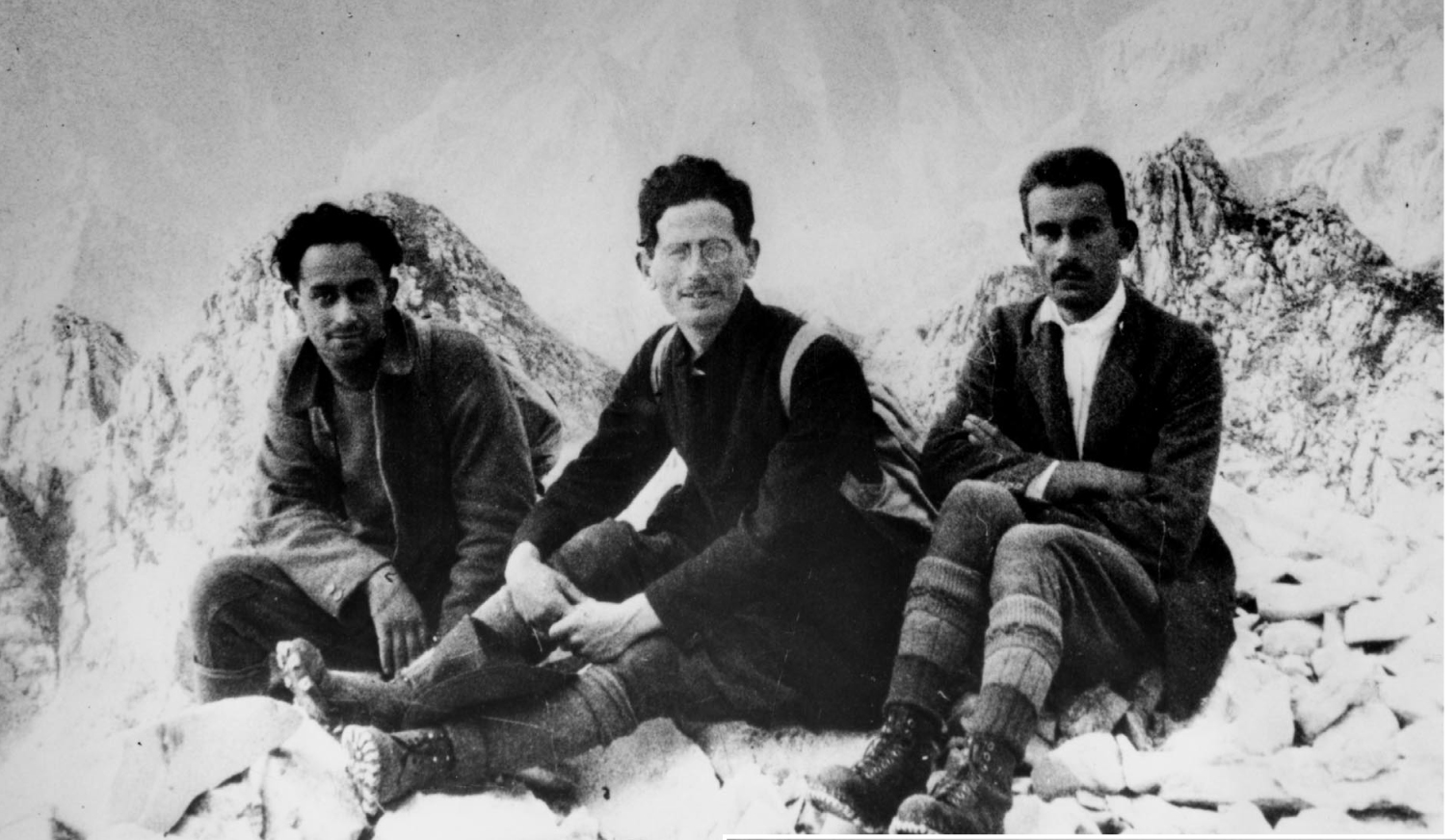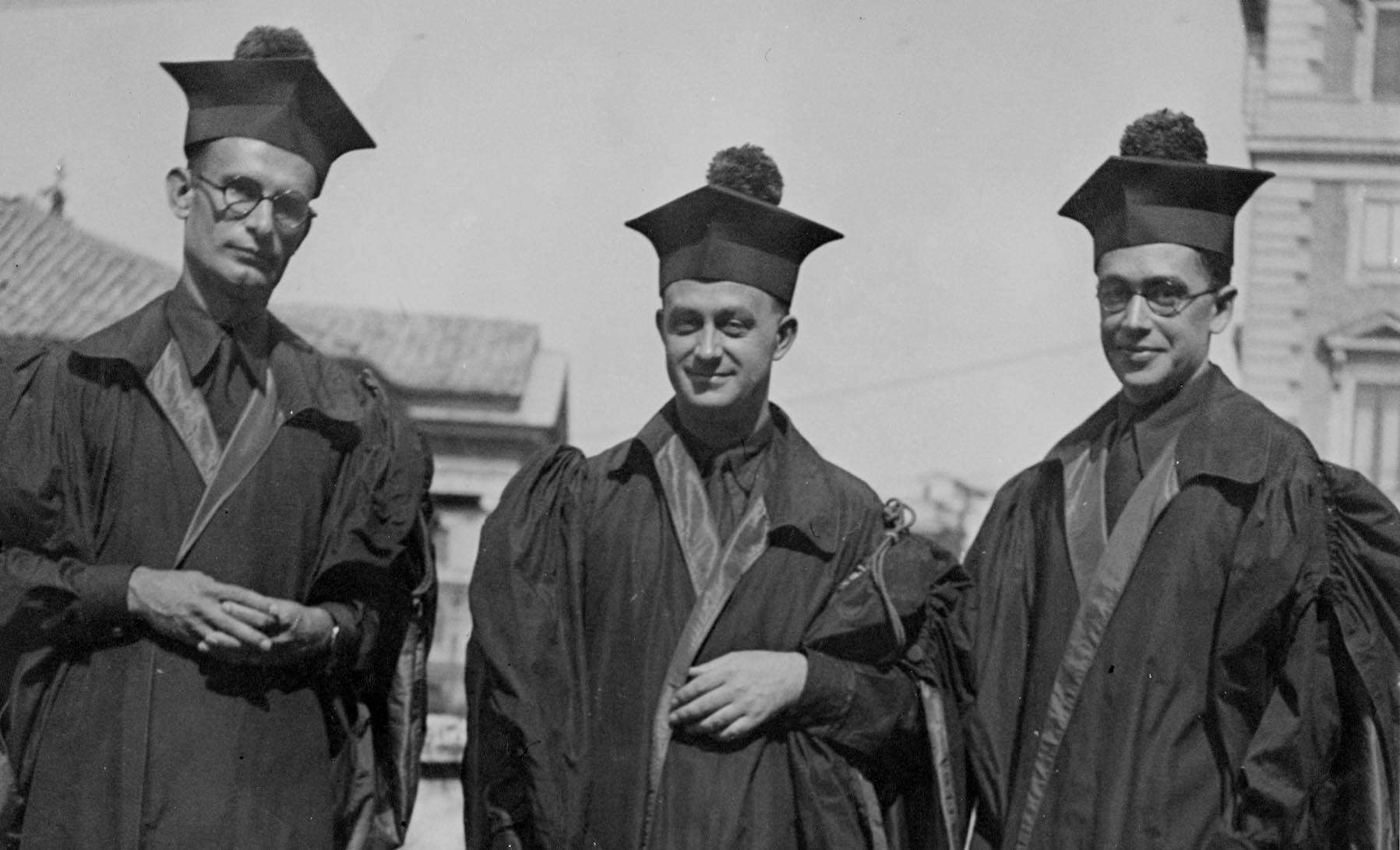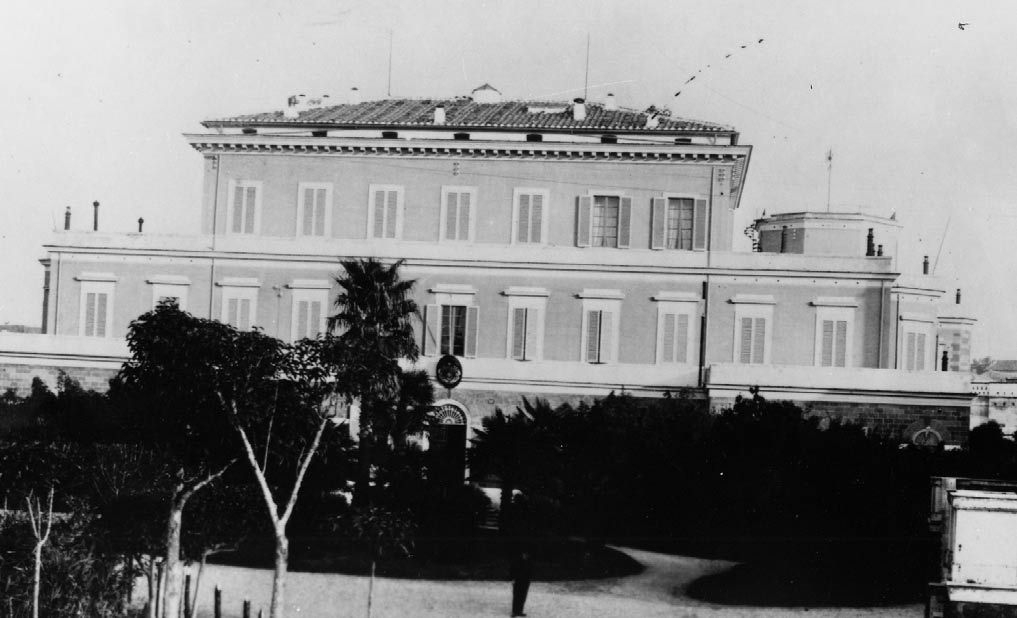Enrico Fermi in Rome, 1931–32
DOI: 10.1063/1.1496372
Enrico Fermi was extraordinary. He was the first internationally known Italian physicist since Alessandro Volta and Luigi Galvari more than a century earlier. Fermi was one of the great theoretical physicists and perhaps the greatest experimental physicist of the twentieth century.
I spent two half-years in Rome with Fermi; the spring semester of 1931 and the spring of 1932. Meeting the great man was a shock. This was no “highbrow” in an ivory tower. Coming into his office, you found a man who looked like other Italians on the street—but busily doing some algebra on quantum electrodynamics. The door would be open, and one or more of his colleagues would drop in whenever they felt like it. This informality was a great change from the structure of the German universities to which I was accustomed.
The most important of Fermi’s colleagues were Emilio Segrè, Franco Rasetti, and Edoardo Amaldi. There were several others in Fermi’s part of the Institute of Physics on the Via Panisperna in Rome. They were all young when I first came. Fermi was 30, the others ranged from 23 to 27. I, 25 years old at the time, fit right in.
Segrè and Rasetti, like Fermi, would later emigrate to the US. Segrè went on to a distinguished career in experimental physics at the University of California, Berkeley. Rasetti “converted” to paleontology. Amaldi remained in Italy and was one of Europe’s leading physicists for many years after World War II.

The Apuan Alps in Italy form the backdrop for this photograph of (left to right) Enrico Fermi, Nello Carrara, and Franco Rasetti circa 1922.
(Photograph by S. A. Goudsmit, courtesy AIP Emilio Segrè Visual Archives, Goudsmit Collection.)

As I said, informality pervaded the group. Each of us was working on his own experiment or theoretical problem. But we talked physics all the time. If we disagreed, we would refer the problem to “the pope,” Fermi. He was, after all, “infallible in matters of the faith.”
Fermi was always willing to help with specific problems; anyone could come to him. “Now let us think about it,” Fermi would say. After a minute or so, he would remind the questioner of an apparently unconnected problem in physics whose solution was already well known. He would then reason to a similarity between the problems. Usually this was enough to break the petitioner’s mental logjam.
I was impressed by the success of this style of doing physics, and consciously tried to bring it with me when I came to America. I believe I was fairly successful at Cornell University. And I also believe that it contributed to the success of the Manhattan Project at Los Alamos.
Despite his youth, Fermi did not lack national recognition. The Accademia Nazionale dei Lincei (National Academy of Lynxes), which had been founded at the beginning of the 17th century would, of course, not take such a young member. But Benito Mussolini had founded the Accademia Italiana, in which he assembled Italy’s brightest young scholars. Fermi was a member, which conferred the title “Excellency” and extra income.
The title was occasionally useful. The Institute of Physics shared a hill in the middle of Rome with the Department of the Interior. The two buildings shared access over a one-lane paved road. About once a month, the department would hold a meeting to which many important officials came. At those times, there was a guard on the access road. On one such day, Fermi drove up in his somewhat dilapidated car in his somewhat informal clothes. A suspicious guard stopped him. “Just who are you?”
“I am the driver for his Excellency Fermi.”
“I cannot let you in!”
“His Excellency would be very much annoyed if he cannot find me there.”
The guard yielded. When Fermi told us the story, he was proud that everything he had said to the guard was the absolute truth.
Peculiar nuclear behavior
Several years before I went to Rome, Fermi had published Fermi statistics. By 1931 they were recognized as a necessary consequence of the antisymmetry of the wavefunctions of any assembly of many electrons. Since 1926, Fermi had been working on quantum electrodynamics, or QED. (See the article “Enrico Fermi and Quantum Electrodynamics, 1929–32,” by Silvan S. Schweber, on page 31.) His theory was simple and straightforward, but equivalent to the approach of Werner Heisenberg and Wolfgang Pauli. Fermi’s work was published in Reviews of Modern Physics in 1932. 1 I learned QED from this article.
One of Fermi’s colleagues observed the band spectrum of N2 and found that nitrogen nuclei obey Bose statistics. This behavior contradicted the then accepted theory, which held that nitrogen nuclei should consist of 14 protons and 7 electrons, all of them fermions. An odd number (21) of fermions should obey Fermi and not Bose statistics.

Dressed in Academic Regalia are (left to right) Franco Rasetti, Enrico Fermi, and Emilio Segrè, in Rome, 1932.
(Courtesy AIP Emilio Segrè Visual Archives.)

Other peculiar things were being observed in nuclei. Walter Bothe had examined the neutral rays that were emitted when beryllium-9 was bombarded with alpha particles. Bothe considered the emitted rays to be super-penetrating x-rays. Fermi decided to investigate the problem experimentally and prepared his group for nuclear experiments. James Chadwick soon recognized Bothe’s rays to be neutrons. Fermi was then prepared to do experiments on neutrons; that work resulted in his winning the Nobel Prize in Physics in 1938.
Before coming to Rome, I had been interested in the splitting of atomic energy levels when an atom is inserted into a crystal. Paul Ewald, then professor of physics at the University of Stuttgart, had suggested to me that a good example of this effect occurred with a rare earth atom in a crystal of a rare earth salt. I now wanted to calculate the splitting quantitatively, for which I needed the wavefunction of the electrons in the rare earth atom. A Hartree–Fock calculation was beyond my capacity. When I consulted Fermi, he suggested that I start from the electron distribution in his statistical atom. I took his suggestion, and calculated the electrostatic energy made by the statistical-atom electron distribution and the nucleus. Then I calculated the electron wavefunctions in this electrostatic potential. Fermi decided to include my result in his handwritten encyclopedia, which he called Ψarum (“Of Wavefunctions”). I was very proud.
By 1932, using Møller’s theory to calculate the interaction of relativistic charged particles, I had calculated the stopping power of charged particles of relativistic velocity in matter. Fermi was somewhat interested in my result; he later improved it by including the dielectric constant of the matter. But his main interest was in the Møller interaction, which was just the first order in e 2 of the result of QED.

The Institute of Physics, on Rome’s Via Panisperna.
(Courtesy AIP Emilio Segrè Visual Archives.)

So he proposed that we write a joint paper on the various expressions for the interaction of relativistic charged particles: the full result of QED, the Møller approximation, and Breit’s interaction, which was valid to order v 2/c 2. We soon had done the algebra, which left only the writing of the paper.
Fermi had no secretary, so he did the typing. He would speak every sentence in German—which he knew well from a year as a postdoc in Germany. I then had a chance to suggest corrections. I made very few, some in language, fewer in content; then he would type it. My job was to write the few formulas, which would then be inserted by hand into the typed manuscript. After we had each read over the whole paper, we sent it in for publication.
In the late 1920s and early 1930s it was customary for a physics postdoc to spend a year or so at one of the great academic centers; Institute for Theoretical Physics in Copenhagen with Niels Bohr, University of Cambridge with Ernest Rutherford and Ralph Fowler, University of Göttingen with Max Born, or University of Munich with Arnold Sommerfeld. This study was frequently supported by fellowships from the Rockefeller Foundation. I followed custom by going to Cambridge, but then became the first to go to Rome to see Fermi. There were only a few who followed: Edward Teller, George Placzek, Felix Bloch, and Rudolf Peierls. All four were among the great physicists of the middle third of the century.
I was very happy with my choice. Fermi changed my whole style of doing physics and weaned me from the formal structure of most European universities. I was also most pleased when my first sabbatical, which I spent at Columbia University, coincided with Fermi’s arrival at Columbia. As a result, we resumed our friendship, which continued until his premature death.
References
1. E. Fermi, Rev. Mod. Phys. 4, 87 (1932).https://doi.org/10.1103/RevModPhys.4.87
More about the Authors
Hans A. Bethe is an emeritus professor of physics at Cornell University. He won the Nobel Prize in Physics in 1967 for his work on energy production in stars. Henry Bethe, a retired banker, now assists his father with many of his articles.
Hans A. Bethe. 1 Cornell University, US .
Henry Bethe. 1 Cornell University, US .
